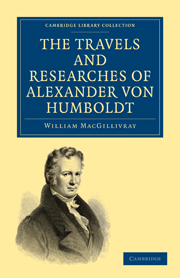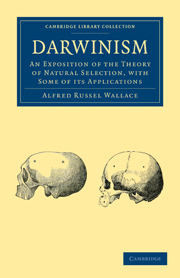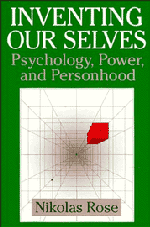Refine search
Actions for selected content:
13588 results in History of science and technology
Sherry Turkle (ed.), Evocative Objects: Things We Think With. Cambridge, MA and London: MIT Press, 2007. Pp. ix+385. ISBN 978-0-262-20168-1. £19.95 (hardback). - Sherry Turkle (ed.), Falling for Science: Objects in Mind. Cambridge, MA and London: MIT Press, 2008. Pp. xii+318. ISBN 978-0-262-20172-8. £19.95 (hardback). - Sherry Turkle (ed.), The Inner History of Devices. Cambridge, MA and London: MIT Press, 2008. Pp. x+208. ISBN 978-0-262-20176-6. £19.95 (hardback).
-
- Journal:
- The British Journal for the History of Science / Volume 43 / Issue 3 / September 2010
- Published online by Cambridge University Press:
- 08 September 2010, pp. 506-508
- Print publication:
- September 2010
-
- Article
- Export citation
David Charles Gooding(21 November 1947–13 December 2009)
-
- Journal:
- The British Journal for the History of Science / Volume 43 / Issue 3 / September 2010
- Published online by Cambridge University Press:
- 08 September 2010, pp. 459-467
- Print publication:
- September 2010
-
- Article
-
- You have access
- HTML
- Export citation
Galina Kichigina, The Imperial Laboratory: Experimental Physiology and Clinical Medicine in Post-Crimean Russia. Amsterdam and New York: Rodopi. Pp. ii+374. ISBN 978-90-420-2658-2. £72.20 (hardback).
-
- Journal:
- The British Journal for the History of Science / Volume 43 / Issue 3 / September 2010
- Published online by Cambridge University Press:
- 08 September 2010, pp. 491-493
- Print publication:
- September 2010
-
- Article
- Export citation
Jennifer Karns Alexander, The Mantra of Efficiency: From Waterwheel to Social Control. Baltimore: The Johns Hopkins University Press, 2008. Pp. xvii+233. ISBN 978-0-8018-8693-5. £33.50 (hardback).
-
- Journal:
- The British Journal for the History of Science / Volume 43 / Issue 3 / September 2010
- Published online by Cambridge University Press:
- 08 September 2010, pp. 505-506
- Print publication:
- September 2010
-
- Article
- Export citation
Christopher Hamlin, Cholera: The Biography. Oxford University Press, 2009. Pp x+344. ISBN 978-0-19-954624-4. £12.99 (hardback). - Mark Jackson, Asthma: The Biography. Oxford University Press, 2009. Pp xi+249. ISBN 978-0-19-923795-1. £12.99 (hardback). - Andrew Scull, Hysteria: The Biography. Oxford University Press, 2009. Pp vii+223. ISBN 978-0-19-956096-7. £12.99 (hardback). - Robert Tattersall, Diabetes: The Biography. Oxford University Press, 2009. Pp x+229. ISBN 978-0-19-954136-2. £12.99 (hardback).
-
- Journal:
- The British Journal for the History of Science / Volume 43 / Issue 3 / September 2010
- Published online by Cambridge University Press:
- 08 September 2010, pp. 476-478
- Print publication:
- September 2010
-
- Article
- Export citation

A Preliminary Discourse on the Study of Natural History
-
- Published online:
- 29 August 2010
- Print publication:
- 24 September 2009
- First published in:
- 1834

The Travels and Researches of Alexander von Humboldt
- Being a Condensed Narrative of his Journeys in the Equinoctial Regions of America, and in Asiatic Russia; Together with Analyses of his More Important Investigations
-
- Published online:
- 29 August 2010
- Print publication:
- 24 September 2009
- First published in:
- 1832

The Philosophy of Zoology
- Or a General View of the Structure, Functions, and Classification of Animals
-
- Published online:
- 29 August 2010
- Print publication:
- 20 July 2009
- First published in:
- 1822

Darwinism
- An Exposition of the Theory of Natural Selection, with some of its Applications
-
- Published online:
- 29 August 2010
- Print publication:
- 20 July 2009
- First published in:
- 1889

The Naturalist on the River Amazon
- A Record of Adventures, Habits of Animals, Sketches of Brazilian and Indian Life, and Aspects of Nature under the Equator, during Eleven Years of Travel
-
- Published online:
- 29 August 2010
- Print publication:
- 20 July 2009
- First published in:
- 1873

Contributions to the Theory of Natural Selection
- A Series of Essays
-
- Published online:
- 29 August 2010
- Print publication:
- 20 July 2009
- First published in:
- 1870

The Tiger and the Shark
- Empirical Roots of Wave-Particle Dualism
-
- Published online:
- 04 August 2010
- Print publication:
- 30 September 1983

Inventing our Selves
- Psychology, Power, and Personhood
-
- Published online:
- 04 August 2010
- Print publication:
- 13 July 1996
Ageing in the Seventeenth and Eighteenth Centuries
-
- Journal:
- Science in Context / Volume 23 / Issue 3 / September 2010
- Published online by Cambridge University Press:
- 30 July 2010, pp. 267-288
- Print publication:
- September 2010
-
- Article
- Export citation
Tricks of Transference: Oka Asajirō (1868–1944) on Laissez-faire Capitalism
-
- Journal:
- Science in Context / Volume 23 / Issue 3 / September 2010
- Published online by Cambridge University Press:
- 30 July 2010, pp. 367-391
- Print publication:
- September 2010
-
- Article
- Export citation
The Model that Never Moved: The Case of a Virtual Memory Theater and Its Christian Philosophical Argument, 1700–1732
-
- Journal:
- Science in Context / Volume 23 / Issue 3 / September 2010
- Published online by Cambridge University Press:
- 30 July 2010, pp. 289-327
- Print publication:
- September 2010
-
- Article
- Export citation
“Sooty Empiricks” and Natural Philosophers: The Status of Chemistry in the Seventeenth Century
-
- Journal:
- Science in Context / Volume 23 / Issue 3 / September 2010
- Published online by Cambridge University Press:
- 30 July 2010, pp. 329-350
- Print publication:
- September 2010
-
- Article
- Export citation
SIC volume 23 issue 3 Cover and Front matter
-
- Journal:
- Science in Context / Volume 23 / Issue 3 / September 2010
- Published online by Cambridge University Press:
- 30 July 2010, pp. f1-f3
- Print publication:
- September 2010
-
- Article
-
- You have access
- Export citation
Divine Illumination, Mechanical Calculators, and the Roots of Modern Reason
-
- Journal:
- Science in Context / Volume 23 / Issue 3 / September 2010
- Published online by Cambridge University Press:
- 30 July 2010, pp. 351-366
- Print publication:
- September 2010
-
- Article
- Export citation
SIC volume 23 issue 3 Cover and Back matter
-
- Journal:
- Science in Context / Volume 23 / Issue 3 / September 2010
- Published online by Cambridge University Press:
- 30 July 2010, pp. b1-b10
- Print publication:
- September 2010
-
- Article
-
- You have access
- Export citation
